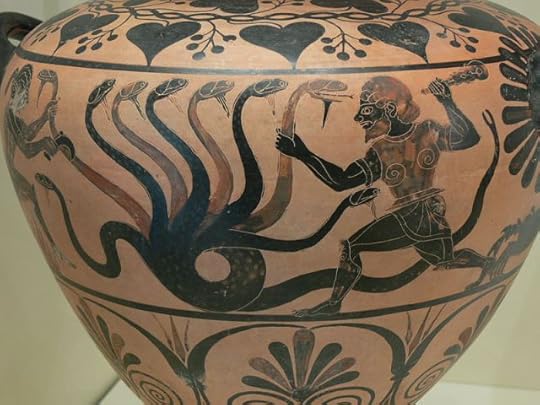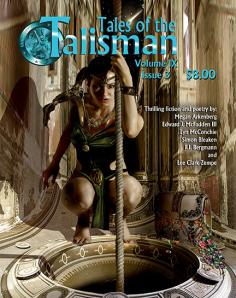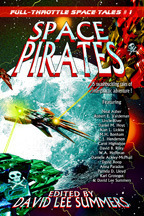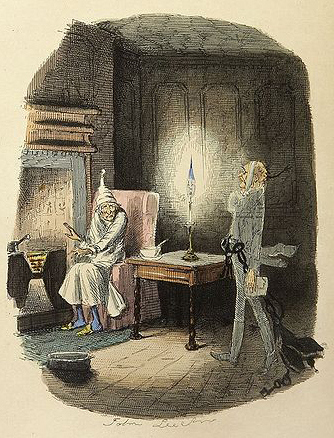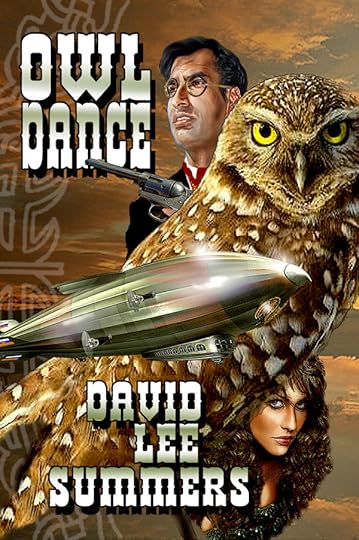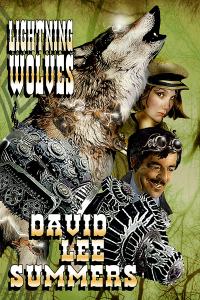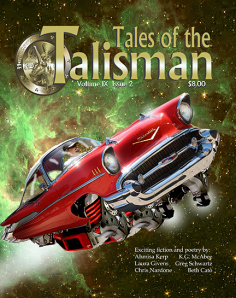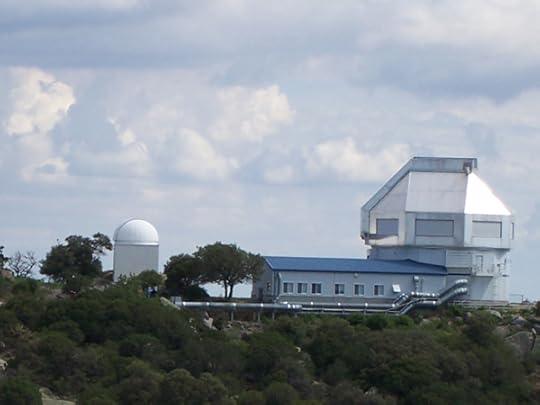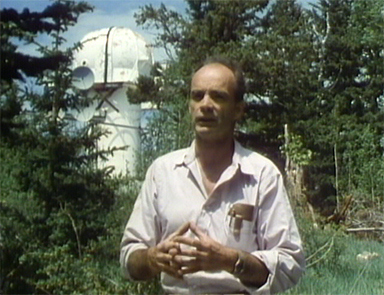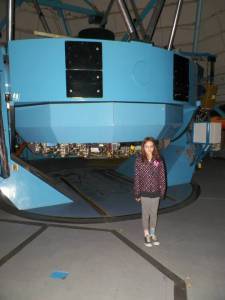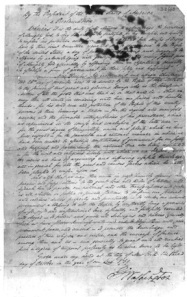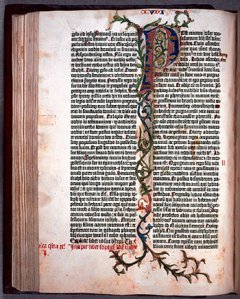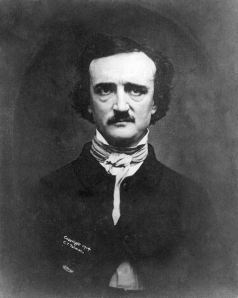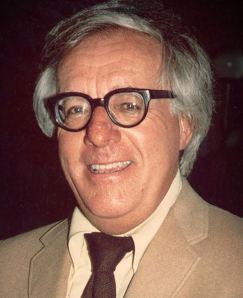David Lee Summers's Blog, page 112
January 4, 2014
New Year, New Adventures
I rang in the new year at my “day” job, observing distant galaxies at the WIYN 3.5-meter telescope with a spectrograph called Hydra. This is a device that allows us to study the light from up to 100 objects spread across the sky at one time. A robot places fibers on a plate matching precisely with objects on the sky. When the robot works well, it’s an amazing process to watch. When the robot malfunctions, I have to intervene to make sure the machine doesn’t break or twist the fibers.
Unfortunately, the robot was not working well this week, meaning I had to intervene a lot, especially on the first night of the new year, making my job feel a little like one of the Labors of Hercules. The next night, they discovered a loose wire, and I gather the instrument is once again working well.
I’m hopeful the rest of the year won’t require such Herculean efforts, but I do have a series of labors to tackle, which will produce some great adventures for you, dear readers. First off, today I’ll be sending Tales of the Talisman volume 9, issue 2 to the printer. I will be moving on immediately to laying out volume 9, issue 3 (you can see the cover to the left) and sending the volume 9, issue 4 stories to the artists for illustration. This should bring the magazine more-or-less back on schedule.
What’s more, Tales of the Talisman is once again open to submissions. I already have a good stack of material to read, but more stories are always welcome! If you’d like to submit, please visit our guidelines page at www.talesofthetalisman.com/gl.html for details. Almost all of the submissions have been doing an excellent job of following the guidelines well. Although, a couple of people clearly don’t feel they need to bother with guidelines. I guess those are stories I don’t need to bother with either.
At the end of this month, the Full-Throttle Space Tales anthologies published by Flying Pen Press will be going out of print. If you want to get copies of the first editions, this is a good time to do so. They’re available at amazon.com – the link should take you to the search results. I plan to contact the authors in my anthologies Space Pirates and Space Horrors, and if they agree, I plan to bring out new editions through Hadrosaur Productions. What’s more, I’ve been talking to some of the other editors and there seems to be interest in bringing out other volumes from the series as well. It’s still too early to discuss details, but I am starting to brainstorm some crowdfunding opportunities. Stay tuned.
In addition to these labors, I’m also proceeding with my own writing. I’m about 20,000 words into a new horror novel entitled The Astronomer’s Crypt. Tentative plans are for this novel to be available around Halloween this year. A new edition of my novel Owl Dance will be out from Sky Warrior publishing this year, along with its sequel Lightning Wolves. I also need to finish the third novel in that series, The Brazen Shark. Lots to do this year and that’s just in the writing world! So time to get cracking.


December 30, 2013
2013 in review
The WordPress.com stats helper monkeys prepared a 2013 annual report for this blog.
Here’s an excerpt:
A New York City subway train holds 1,200 people. This blog was viewed about 4,900 times in 2013. If it were a NYC subway train, it would take about 4 trips to carry that many people.
Click here to see the complete report.


December 28, 2013
The Horror of Christmas
This past week, my regular break from the observatory straddled the Christmas holiday. I spent some of that time celebrating with friends and family. I spent some of that time working on Tales of the Talisman Magazine. I also spent some of that time working on a new horror novel tentatively entitled The Astronomer’s Crypt, which is the story of dark forces being unleashed on an unsuspecting observatory one stormy night. On one hand, it seems a little strange to spend the Christmas holidays writing a scary novel. On the other hand, when one looks at Christmas, there are some pretty scary traditions associated with the darkest nights of the year.
This year, Krampus seems to be getting a lot of attention. He’s a goat-like creature from Germanic folklore who travels with St. Nicholas. Whereas St. Nicholas brings presents to good children, Krampus takes evil children directly to Hell. (Do not pass “Go.” Do not collect $200!) Essentially, he’s Santa’s scary enforcer. The traditions say he’s chained. Apparently Santa captured him and controls him. As a writer, I see definite story potential in that idea. In countries such as Austria, Hungary, and Croatia, people dress up as Krampus and rattle chains and bells at children, reminiscent of a Halloween monster in an American haunted house.
As it turns out, you don’t have to go as far as Eastern Europe to find Christmas chills. Just look at one of the novels most associated with Christmas itself, A Christmas Carol by Charles Dickens. To me, Marley’s ghost and the Ghost of Christmas Yet to Come have always been frightening. Their whole job is to scare Scrooge into being a good man. Even the Ghost of Christmas Present, who is generally friendly and jovial frightens Scrooge by presenting the loathsome children Want and Ignorance.
Even recent popular culture associated with Christmas has some scary elements. I grew up watching Rankin Bass holiday specials such as Rudolph the Red Nosed Reindeer with its Abominable Snow Monster of the North and Santa Claus is Comin’ to Town with its Winter Warlock. Although these bad guys eventually become good and are relatively tame, I remember them scaring me when I first encountered them.
The joy and light of Christmas are so emphasized that we sometimes forget that they symbolically triumph over darkness and evil. It actually feels right to have a few monsters lurking in the dark corners of the holiday so they can be chased away by good spirits. As we wrap up 2013, I wish you peace and prosperity in the coming year and hope all the dark spirits remain in the shadows.


December 21, 2013
Owls, Wolves, and Classic Cars
A couple of months ago, I received word that the owners of Flying Pen Press decided to change the focus of their business from publishing fiction to providing marketing services to other publishers and selling those publishers’ books through specialized catalogs. This strikes me as a good move for David Rozansky at Flying Pen and one that’s in keeping with his talents and interests. I wish him the best in this new endeavor.
Of course, this decision does have some ramifications for me. One of those is that it means that Flying Pen Press’s edition of my wild west steampunk novel Owl Dance will be going out of print in a little over a week. If you want to get the first edition before it goes out of print, this is the time to do so! It’s available at: http://www.amazon.com/Owl-Dance-David-Lee-Summers/dp/0979588936/
The good news is that Owl Dance won’t be out of print for long. The novel is being picked up by Sky Warrior Publishing. It will be out of print for a short time while a new editor gives it another pass, then you’ll see a brand new second edition out. What’s more, that will be followed soon by the sequel, Lightning Wolves!
As you can see, Sky Warrior already has a preliminary cover design! In the meantime, the editor has sent me revision notes on the text and I’ll be working my way through those shortly. Lightning Wolves picks up right where Owl Dance left off. The Russian invasion of Denver has been thwarted. Ramon and Fatemeh are contemplating their life together while Professor Maravilla and Larissa Crimson try to figure out how to build a new generation of flying machines. Their quest for funding leads them into a chase for ghosts near a mining camp that will one day become Tombstone, Arizona.
Despite making sure that Owl Dance and its sequels are settled into their new home, I haven’t forgotten about Tales of the Talisman. I plan to finish layout of volume 9, issue 2 this weekend. Although I didn’t plan to make a steampunk issue, this issue has a distinctly retro vibe and essentially stands as a third special steampunk issue. There are some great stories by C.J. Henderson, K.G. McAbee and Gary Every. I’ve received a fine set of illustrations by such folks as Tom Kelly, Kathy Ferrell and Teresa Tunaley. I’m looking forward to putting the final touches on this issue and getting it to the printer just after the first of the year. As soon as this issue is off to the printer, I’ll be finishing volume 9, issue 3, which should bring us back up to date.
For those who are interested in submitting stories or poetry to Tales of the Talisman, we do plan to open on schedule on January 1, 2014. Please don’t submit stories before that date and review the guidelines at: http://www.talesofthetalisman.com/gl.html. I look forward to seeing what you have for me!


December 14, 2013
Always Learning
Over the years, I’ve been fortunate enough to meet some truly remarkable scientists, including Vera Rubin, one of the first people to obtain evidence for the existence of dark matter, and Subrahmanyan Chandrasekhar, who won the Nobel Prize in physics for developing the theory of the evolution of massive stars. One of the things that strikes me about such people is that while they know a lot and have a lot to teach, they still feel there is more to learn. The thirst for knowledge never goes away.
Earlier this week, I received the second round of edits for my wild west steampunk novel Lightning Wolves. Here we see the remains of the Presidio Santa Cruz de Terrenate, one of the locations in the novel as it appears today:
I’m pleased that the novel is progressing toward publication, but I was also pleased to see that my editor had some good practical advice for how I could improve my craft. It’s true that a writer needs a thick skin when dealing with honest, tough feedback from an editor, but what I’ve found almost more valuable is the lesson I learned from the scientists I mentioned—there’s always something to learn.
Experienced writers know that it’s possible to get into an endless cycle of revision. The way a lot of people get around that is simply to find a place where you feel satisfied that you have done your best job with the work in progress. The danger of this approach is that you can reach a place of stagnation, a place where the bar never gets raised on having “done your best job.” That’s another place where having an attitude that there’s always something to learn helps. It doesn’t just soften the blow of criticism, it really does help one grow—not just as a writer, but at whatever you choose to do.
Another exciting thing about this past week is that I had a good full night observing at the WIYN telescope where we were able to use a device called the WIYN Tip-Tilt Module. This is an adaptive optics system that allows starlight to be concentrated into the strongest possible signal. In the six years I’ve been at Kitt Peak, the engineers have been working to get this device to work reliably and it was a genuine pleasure to see it succeed. We used it this week while imaging supernovae in distant galaxies. It reminds me that a willingness to learn coupled with persistence makes a very powerful combination, indeed.


December 7, 2013
Remembering Stirling Colgate
My graduate advisor, Stirling A. Colgate, passed away last weekend. He was a colorful character, president of New Mexico Tech from 1965-1974, and physicist at Los Alamos National Laboratory. Here we see him as he appeared in the PBS Nova episode “Death of a Star” which was filmed around the time I worked for him. In the background is the Digitized Astronomy Supernova Search Telescope that he developed and I worked on for two years.
Perhaps Stirling’s most famous contribution to astrophysics was predicting that there would be a neutrino burst during a supernova explosion. This idea was borne out by the explosion of Supernova 1987A. Stirling once told me that the reason he went into physics was that he enjoyed watching things explode. Of course supernovas are the biggest explosions in the universe.
One of Stirling’s other major accomplishments was his attempt to build a supernova search telescope. He started this telescope in the 1960s, during the era when astronomers sat out in the dome with the telescope, often taking photos on glass plates or counting photons with photoelectric photometers. Stirling’s supernova search never worked as hoped, but the papers that came from the project helped to drive further development in robotic and automated astronomy. It paved the way for remote operation of telescopes. This in turn allowed for better image quality, because astronomers didn’t have to be out at the telescope. It allowed for real-time analysis of data, because astronomers could use a computer to collect data and look at it at the same time. What’s more, because of this work, astronomers don’t always have to travel to the telescope that’s collecting their data, they can work over the internet. Among other things, this work allowed for the development of robotic space-based telescopes such as the Hubble Space Telescope and Kepler.
As I said, Stirling was a colorful character. His last name was not coincidence. He was an heir to the Colgate family of Colgate toothpaste fame. There are many stories I could tell that really aren’t appropriate here, but one thing he did tell a friend upon meeting him was, “You’ve no doubt heard many stories about me. Let me assure you that each and every one of them is true, even the contradictory ones!”
While I was working for Stirling in 1989, William Fowler came to give a lecture at New Mexico Tech. In 1983, Fowler won the Nobel Prize in Physics for theoretical and experimental studies of the nuclear reactions of importance in the formation of the chemical elements in the universe. Fowler had also been one of Stirling’s postdoctoral advisors. The three of us, along with Stirling’s wife, Rosie, sat around a table in Socorro’s Capitol Bar, shooting the breeze. I remember Stirling turning to Willy Fowler and asking what he thought about recent studies that showed the possibility of global warming. Fowler said if it bore out, it would have tremendous impact. It’s amazing to me that over twenty years later, we’re just starting to see the scale of the impact.
Unfortunately, over the years, Stirling’s work and mine carried us in different directions. It has been a while since I’ve had a chance to communicate with him, but he still sticks with me as an important and influential teacher. He taught me how to solder electronics, how to read an oscilloscope and how to repair cryogenic systems. He taught me about the physics of exploding stars and he taught me about statistical analysis. He taught me to always ask why things work and not just how they work.
Free of his mortal coil, I picture Stirling in a swimsuit, waiting to dive into a distant supernova and ride the waves of the explosion as far they’ll carry him.


November 30, 2013
Thankful in 2013
This week, I spent Thanksgiving working at Kitt Peak National Observatory. My family was able to join me and we spent the holiday in one of the small houses on the mountain. We ate dinner at the cafeteria, where they served a modest but essentially traditional meal of turkey, mashed potatoes, sweet potatoes, green beans, and pie. I spent the night helping to observe material between galaxies in galactic clusters. My daughters came up to help me both on Thanksgiving and the night before. Here we see my youngest at the WIYN telescope at Kitt Peak as we were opening for a night’s work.
Earlier in the week, I had the opportunity to have dinner with my oldest niece and her lovely family. I was able to meet my grand niece and grand nephew for the first time. I would have enjoyed spending more time with them, but I am definitely thankful schedules worked out that we could see them.
I was curious to learn a little more how this holiday came about. Of course, the traditional story is that it started in November 1621 when the settlers at Plymouth, Massachusetts celebrated their first successful corn harvest with the help of the Wampanoag tribe in the area. Governor William Bradford called for three days of Thanksgiving. As part of the celebration, he sent out a party to go fowling, to bring back game birds for the feast. Whether they actually had Turkey is anyone’s guess.
What I was less familiar with was that George Washington made the first official Thanksgiving Proclamation, declaring that Thursday, November 26, 1789 would be a day of Thanksgiving to celebrate the successful end of the American Revolution and the ratification of the United States Constitution. Many presidents carried on the tradition of making Thanksgiving Proclamations, but it didn’t become a regular holiday until Abraham Lincoln made it so during the height of the Civil War. In Lincoln’s proclamation, he asked all Americans to pray to God and “commend to his tender care all those who have become widows, orphans, mourners or sufferers in the lamentable civil strife” and to “heal the wounds of the nation.”
This year, with all the “black Friday” ads that have poured into my email box, I feel like Thanksgiving has become the preliminary event to an orgiastic weekend of shopping. It’s sure a far cry from celebrating a bountiful harvest or remembering those who strove to make the United States a great nation. It makes me glad I was able to spend the weekend on a remote mountaintop with my family and with astronomers I’ve come to know well enough they feel like family, and look to the stars and dream of the future.


November 23, 2013
Happy Birthday, Doctor Who!
Today marks the fiftieth anniversary of the British television series Doctor Who. I’ve been a fan for about thirty-two of those years. I actually discovered the series through Starlog Magazine. There was an article about how the actor who was playing the Doctor was changing from Tom Baker to Peter Davison. I was intrigued because the two actors didn’t look anything alike and I wondered how they could possibly do that. Unfortunately, growing up in Southern California, no PBS station at the time actually carried the series, so I had to wait a few months until I went to my uncle’s house in Florida before I would finally get to make my first journey with the Doctor. The episode was “Robot’s of Death” starring Tom Baker.
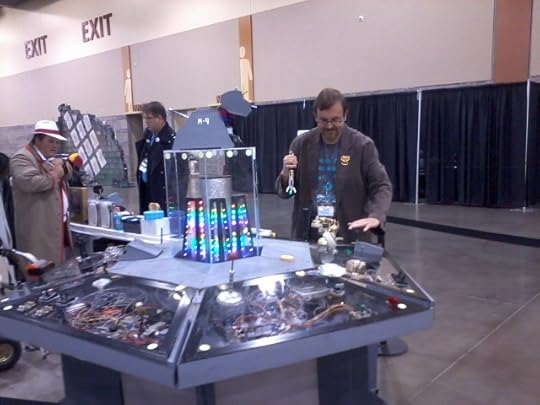
David working on the Tardis console. The Doctor looks on with concern!
Eventually, after I returned home, the Los Angeles PBS station finally kicked off a run of Doctor Who starting with the 20th anniversary episode, “The Five Doctors.” From that point on, I’ve been able to watch, more or less regularly, when the show has been produced, until the present day.
Doctor Who has inspired me over the years. It’s the story of an alien—a Time Lord—who wanders time and space in a machine called the TARDIS helping where he can, often with the assistance of a human companion. He has lived for hundreds of years and when he grows too old or, as more often happens, becomes injured beyond healing, he regenerates into a new body. Ramon and Fatemeh from Owl Dance have certainly taken some inspiration from the Doctor in terms of their desire to help people where they go. The Scarlet Order vampires have had to deal with questions of longevity and losing those they care about to time, just as the Doctor has.
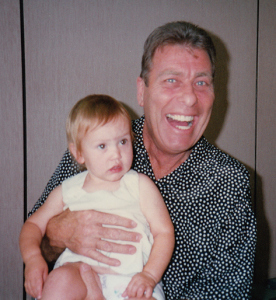
1996: My daughter Myranda meets John Levene—Sergeant Benton on Doctor Who.
Not only has Doctor Who inspired elements of my writing, the show has crept into my personal life at times, too. When my wife and I were trying to decide what to name our second daughter, we were watching one of the early episodes. As the credits scrolled, we saw the name of the show’s first producer, Verity Lambert. We both looked at each other and decided to name our daughter Verity.
Over Labor Day weekend, I was honored to be asked to be on the “Doctor Who: Celebrating 50 Years” panel with such folks as Alastair Reynolds, who recently wrote a Doctor Who novel featuring the third doctor, and Lynne M. Thomas, one of hosts of the Verity Podcast. One of the things I was able to contribute to the panel was an appreciation of the fact that there is much more to Doctor Who than just the television series. There have been two movies starring Peter Cushing and an ongoing comic series in Doctor Who Magazine. There are novels and there’s an ongoing audio series from Big Finish Productions featuring many of the past Doctors. They even started an animated web series when it looked like the show was not coming back to television. The first and only episode is available for free at the BBC’s Doctor Who Website.
With all this going on, newcomers may wonder how anyone keeps all these Doctor Who stories straight. In fact, Doctor Who is rife with contradictions. Not only are there story contradictions that have been dismissed with a wave of the hand and a dismissive declaration of “wibbly wobbly timey wimey” but thematic contradictions. Doctor Who is at once serious and silly, excellent drama and pure cheese, wonderful storytelling and episodes that make you groan. One of the joys of Doctor Who is that it is not merely rife with contradictions, it revels in them, has fun with them and plays with them. Watching how writers have juggled that over the years has been one of the true delights of the show.
I was once asked, if given the opportunity, would I write for Doctor Who? In fact, I once wrote a story based on the eighth Doctor visiting the 1963 World’s Fair in Seattle. So yes, if the Doctor ever came calling and asked if I would go traveling, you bet, I’d be there!


November 16, 2013
Italicizing the Other
Back in college, I majored in physics and astrophysics. Often times, that background actually serves me well as a writer and editor. I learned to read things carefully and developed a keen eye for precision in language. Even so, it sometimes gets me in trouble in the writing world. You see, physicists are trained to ask why things work. We take a lot of math courses where we are presented with rules, but told not to accept them at face value. Mathematical theorems must be proven to work. Language also has its share of grammar and spelling rules that have evolved over time. However, sometimes I find myself asking why those rules need to be. More than once, I’ve frustrated writers and editors with my desire to understand why a rule must be applied, rather than just accepting what’s stated in a style guide.
A case in point is the rule that says you must italicize words from foreign languages. Part of the problem is that this is a “soft” rule because it contains the caveat that foreign words in common use don’t need to be italicized. Given the evolving nature of language and the shrinking of the world because of travel and the internet, this can be a fuzzy line.
At one point, I had been told this was a rule that stems from Victorian England and was started as a way to indicate the inferiority of non-English words. However, in doing some research, I find the practice of italicizing at least some foreign words is much older than the Victorian age and goes back at least to the beginning of typography. I have also found the rule expressed in Italian, Spanish, and French grammar guides as well as English ones. However, I have not seen the practice widely used by Germans. The photo at the left shows a page of the Gutenberg Bible which shows words (though not foreign words) highlighted in a different color for emphasis.
The most convincing argument I’ve seen for italicizing foreign words was attributed to Sandra Cisneros, who suggests that it can be helpful for distinguishing words that look alike but sound different and mean different things. A good example would be the English word mole (a small animal) and the Spanish word mole (pronounced molay and means a sauce). However, even within English, we have confusing words such as lead (pronounced leed and meaning to take charge and variations thereon) and lead (pronounced led and meaning the base metal). As an editor, I often see led (the past tense of the verb “to lead”) misspelled as “lead”.
The most convincing argument I’ve heard for not italicizing foreign words is that it doesn’t really reflect the way we use language. For example, living in New Mexico, less than an hour from the Mexican border, many of my neighbors of all ethnicities are fluent in both English and Spanish. They intermix words and phrases from both languages without really thinking about it. As a writer in this region, that usage is something I want to reflect. However, do I really represent the way they are using language accurately if I italicize a large percentage of their dialog?
Because of this last reason, my tendency is to avoid the practice of italicizing foreign words in my writing even though it’s recommended in most style guides. It’s a practice that seems more divisive than inclusive. That said, I’m always willing to consider alternative points of view as long as they address the reason why the rule exists as opposed to a rote quoting of style guides. I’d be especially interested if anyone can give me a good reference to a history of how this practice of italicizing foreign words came about—or really any good history of English grammar.


November 9, 2013
Visiting a Creative Writing Class
This past Tuesday, I had the opportunity to visit my daughter’s high school creative writing class. The teacher had the students read my short story “The Zombie Shortage” from the anthology Zombiefied: An Anthology of All Things Zombie. I followed that by coming into the class and talking about my process for writing short stories and how I put that into practice with “The Zombie Shortage”. As I pointed out to the class, there are exceptions to all of these ideas, but these are things that have worked for me.
Write the story in a single sitting. Back in high school, I was introduced to Edgar Allan Poe’s statement that a short story is a story that can be read in a single sitting. A few years later, I came to realize that if I expect a reader to read a story in a single sitting, I should endeavor to write a story in a single sitting. This doesn’t necessarily mean that I write a finished, polished story all at once, but at least I do my best to get a draft down in one sitting. Indeed, my most successful stories—meaning the ones that have sold for the most money or I’ve received the most positive feedback on—have all been written this way.
Focus on one coherent theme and bring it to a satisfying conclusion. Again, the source of this idea is Edgar Allan Poe. The part about focusing on one theme is probably the part most people might question, but again, I’ve found my most satisfying stories do that. The problem of the story is laid out in the first paragraph and a satisfying conclusion is reached by the end. Now, a satisfying conclusion doesn’t necessarily mean a “happy ending.” It just means wrap things up so your reader feels like they’ve read a complete story and not a chapter in a longer work.
Visualize your story. There are various techniques for this. When I met Ray Bradbury, shown here in a photo by Alan Light, he talked about visualizing as he wrote—following the characters and seeing what they did and where they went. Some people today talk about this as writing “by the seat of your pants.” For me that’s not the most effective way to work. I find I like to visualize a story before I begin. I like to get to know it well and think of the characters as real people in a real situation before I sit down to write. I like to see the setting and I write based on things I know.
Practice. When I first heard Ray Bradbury talk thirty years ago, he likened writing to shooting baskets. You have to do it a lot to get good at it. You shoot and miss a lot. Eventually swish you get the ball in the basket. The more you do it, the more that happens. For me, the most successful stories have indeed felt much the same as a ball going through a basket. I haven’t really had doubt they were successful stories. Nevertheless, the lesson here is to practice and keep practicing until you get there.
Finally, while I have “The Zombie Shortage” on my mind, I just learned that the collection Zombiefied: An Anthology of All Things Zombie is now out in paperback! Here’s the link for it at Amazon: http://www.amazon.com/Zombiefied-Anthology-All-Things-Zombie/dp/0615910270/



